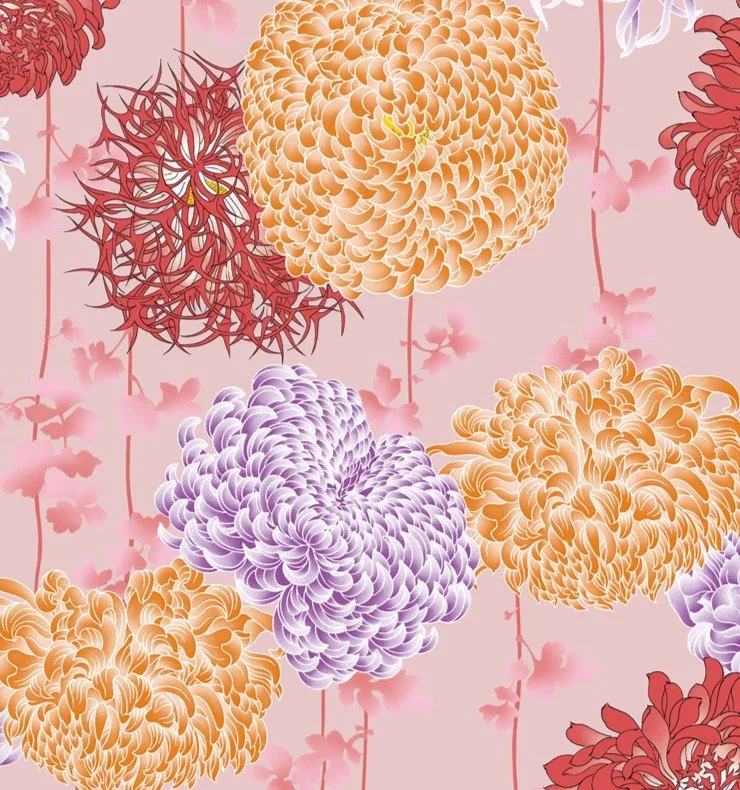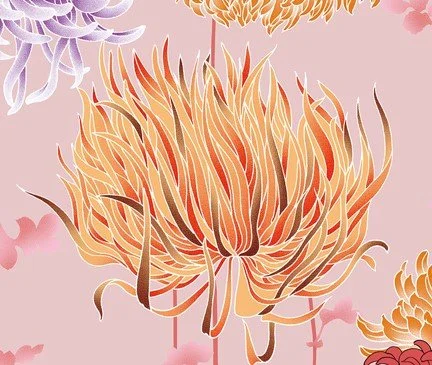Pagong New Pattern : “Chroma and Verde” (Chrysanthemum and Ivy)
The combination of chrysanthemum and ivy is considered auspicious, frequently used for kimonos and obi worn during celebratory occasions, such as weddings, coming-of-age ceremonies, Shichigosan, and entrance ceremonies. The chrysanthemum and ivy pattern is particularly favored for kimonos worn on special occasions, including women's furisode and houmongi. This design not only creates a gorgeous and noble impression but also embodies wishes for good luck and prosperity.
Chrysanthemums have long been a symbol of longevity and immortality in Japan. They were introduced during the Nara period and initially used as medicinal flowers. In Japan, chrysanthemums became part of court events during the Heian period and were highly revered among the aristocracy. Their patterns were frequently featured on costumes and everyday items. Chrysanthemums also serve as the family crest of the imperial family, making them symbols of nobility and elegance.
The combination of colorful chrysanthemums and ivy creates a design that enhances elegance and refinement. This pattern is especially popular on women's kimonos, obi, and accessories, celebrated for its ability to convey a noble and beautiful appearance.
Ivy is a plant that firmly establishes itself in the ground, growing by entwining around other plants and structures. Due to these characteristics, ivy symbolizes "vitality," "prosperity," and "growth." Additionally, its ability to entwine represents "continuity" and "family ties," making it a popular motif that wishes for the prosperity and longevity of families. The palm-shaped leaves, similar to those of maples, and the extending ivy stems are visually appealing. This style was cherished and depicted in picture scrolls during the Heian period. It wasn't until the Momoyama period that ivy became a common pattern in clothing.



